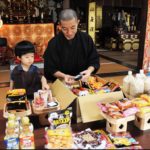I’m Just a Teenage Mushroom
In her ethnography of the matsutake mushroom, Tsing notes that as these mushrooms exchange hands and pass through its specific economic system, thye appreciate in value and decrease in available quantity. At the terminal end of the supply chain, very few matsutake mushrooms remain, and each are worth tens, if not hundreds of times more than when first sold. Value, in what Tsing terms as a supply-chain system, thrives upon the commodification of distance. The relative distance between the Tibetan and Dai harvesters of the Matsutake mushroom to its consumers in Tokyo is one not only measured through physical distance, but by the many layers of exchange and hand-off that refine and give purpose to middlemen who grade and classify mushrooms, and in turn reflect such value upon the mushrooms themselves. In other words, the supply-chain system exists to refine and bestow increasing value upon the objects that pass through it. What makes this mushroom economy significant is that the mushrooms themselves are unaltered and unprocessed, merely sorted and classified based on visual indication.
The capitalist ruin described by Tsing in the title of her book is not only the ruination of forests and natural ecosystems by the byproducts of industrial manufacturing, but the ruination of vulnerable communities in the great race for money. This is not unlike the lament issued by Mauss in The Gift calling for a retreat from capitalism. In her book Tsing states that all factors within an economy of exchange “cultivate each other unintentionally. They make each other’s world-making projects possible (Tsing, 2015: 152).” The existence of the mushroom is a gift and a curse, however this extreme is experienced only by members on terminal ends of this exchange economy. In the Yunnan-Tokyo matsutake supply chain system, the existence of the matsutake to indigenous producers are a gift of an additional income source rendered carnivorous by the exhaustive demands of the Japanese market. Harvesters of the matsutake are pitted against each other to see who can collect the most mushrooms each given season, though, by law of scarcity, the more mushrooms that are found the lower their overall sale price.
The income from one season of harvest is enough to subsist upon for the rest of the year, which enchants more people to enter the economy as producers, as the regions home to matsutake mushrooms are often bereft of other accessible industries. Thus is the creation of a community reliant on chance and desperate for windfall. An abundance of producers creates competition for natural resources, which results in no one profitting enough to exit their role as a producer. The producers in this economy of exchange do not benefit from the processes of assessment as the middlemen do. The more middlemen that join, the greater the authority they exert over the evaluation of mushroom quality, and the more power they wield over producers as they are the guardians of a standard. The more established the standard is, the more faith buyers will have, and the greater the demand will be.
The object most similar to the matsutake mushroom’s economy and situation would be the truffle, caviar, or any perishable delicacy. I understand this would be cheating, I will instead select a yearbook and use it to think about artisan systems and commodification. In America, yearbooks are typically the product of a yearbook class that collect massive amounts of photos and quotes and other youthful remnants to collect into a single book. Thousands of photos will be submitted for the common pages, however, only some will make it into the book. Just as there are immature matsutake mushrooms and overly mature mushrooms, pictures in a yearbook must meet aesthetic criteria to be selected because everyone knows that teenagers are like mushrooms: they don’t taste good after stage 2, and they certainly don’t look good after stage 3. The editors in chief of the yearbook govern the demographics of the yearbook, meaning that depending on the number of editors and the quality of editors, the final yearbook may end up being 80 pages of math olympiad or 80 pages of homecoming or an even balance of both. The editors process all the photos, discarding the ones that are blurry, poorly framed, or ones that contain disagreeable features (acne), and rank them based on the quality of the image and the popularity of the students captured. Even amongst these surviving photos, some are more valued than others and can be identified by size and placement. The overall quality of the layout determines how much the yearbook committee can charge. Their estimation likewise informs the willingness of students to pay for a yearbook of how present they are in the yearbook itself. (Worst case scenario, your face is nowhere but on the class sheet. You feel like you’ve wasted 90 bucks on nothing. However, you can process your yearbook through a secondary channel of valuation: the collecti
Contributed by ShannonLin on 30/01/2023






